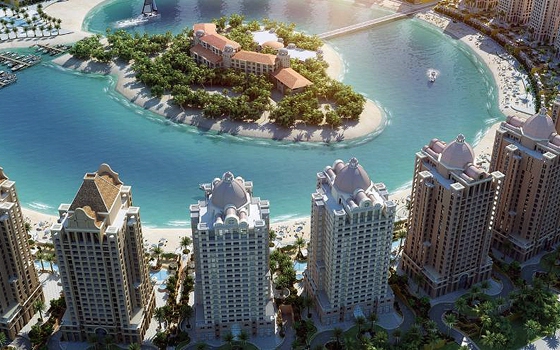Falling energy prices weighed on Qatar’s economic performance in 2015, with lower demand across key export markets and tougher competition producing a sharp drop in government revenues. However, double-digit growth for non-hydrocarbons helped foster economic momentum, expected to continue into 2016.
Qatar’s economy is on track to expand by 4.7% in 2015, despite a 0.5% contraction in the oil and gas sector, according to a report issued by Qatar National Bank (QNB) in early November.
While anticipated growth remains above that of the global economy – which is projected to expand by 3.1%, according to IMF estimates – the revised forecast falls short of the 7.3% predicted in June and marks a drop from the 6.1% growth recorded in 2014.
Ongoing investment spending and robust growth in the non-hydrocarbons sector, which is expected to end the year up some 10.4%, should help offset weaker oil and gas exports, which declined by approximately 40% in 2015, according to figures from the Ministry of Development Planning and Statistics (MDPS).
Energy opening
Although hydrocarbons prices continued to fall in 2015, and energy analysts remain divided on whether the coming year will bring a rebound or further decline, local production is expected to see a significant boost in 2016, when the new $10.4bn Barzan gas project becomes fully operational.
The project, which was the last to be sanctioned before a moratorium on extraction from Qatar’s North Field deposits went into effect in 2005, will add up to 56.6m cu meters to the country’s daily output. According to forecasts from the National Bank of Kuwait, output from Barzan could drive real hydrocarbons growth as high as 1.7% in 2016.
Much of the new production will be directed to the local market, feeding rising demand for feedstock in Qatar’s expanding industrial base. According to government figures, local demand rose by around 80% in the five years to 2014.
Budget deficit looms
Weaker hydrocarbons prices and faltering demand in key export markets have also driven the country’s trade surplus down. According to data from the MDPS, Qatar’s trade surplus declined by 52% year-on-year (y-o-y) in September to QR12.1bn ($3.3m) and is expected to reach $57.9bn for the full year, compared to $100.6bn in 2014.
The country’s changing revenue profile has been reflected in the 2016 budget. According to Ali Shareef Al Emadi, minister of finance, the new budget shows a moderate deficit — Qatar’s first in 15 years.
While the government has made clear its intention to reduce spending in non-essential areas in the year ahead, the bulk of its investment program remained on track in 2015. In particular, Qatar’s transport sector has been a key focus of spending, with the expansion of the Hamad International Airport, and several road and highway projects being rolled out.
Additionally, work on the initial stages of the long-distance passenger and freight rail linking Qatar’s residential and industrial hubs with neighboring countries is scheduled to begin in 2016, while phase 1 of the Doha Metro and Lusail Light Rail Transit are also advancing, on track for completion by the end of 2019.
Cost of living to rise
The slowing of the economy saw wages rise at a more moderate rate than in previous years. According to a survey conducted by management consultancy Hay Group, salaries in Qatar rose by an average of 4.2% y-o-y in 2015, down from 5.4% in 2014.
Furthermore, the impact of greater purchasing power could also be eroded by higher costs of living in 2016, with prices set to rise more quickly than recorded over the last 12 months, according to QNB.
The slight increase in disposable income contributed to modest inflation, which was another hallmark of 2015. The consumer price index was up 1.7% y-o-y in October, according to data issued by the MDPS, driven by higher food and beverage prices, along with rising rental and utilities costs.
Inflation could gain further momentum in the new year as the government works to reduce subsidies. Kahramaa (Qatar General Electricity & Water Corporation) raised its water and electricity tariffs starting in September, the first such increase in a decade.
Real estate on a roll
Despite some slowing in the broader economy, growth in Qatar’s real estate market remained robust, with demand fuelled by a nearly double-digit increase in the country’s population, thanks in large part to an influx of foreign workers involved in development projects. The population reached an estimated 2.46m in 2015, up 9% y-o-y.
Property prices increased 18% year-to-date in September, suggesting there is further pent-up demand in the marketplace. This should support growth in the construction sector into 2016, even if the state puts some projects on hold. However, the industry will likely be under pressure to keep pace with the country’s sizable residential and commercial project pipeline, which could feed into further property inflation in the coming years.
Oxford Business Group
5 January























































